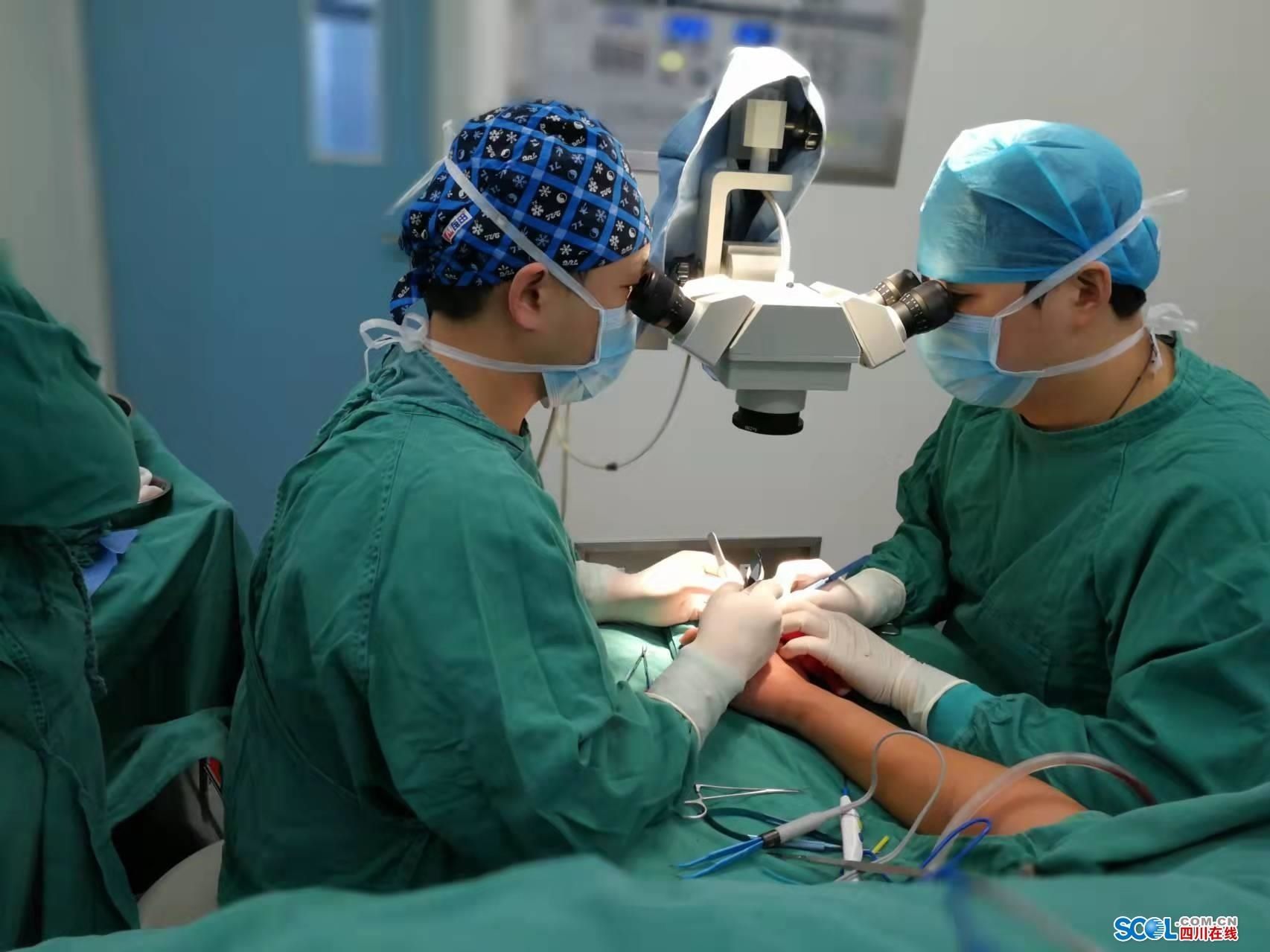Sichuan Online News (Luzhou Channel Zhang Qi) The hand is an important and flexible mechanical structure in the human body. It can complete grasping, rotating, grasping, pinching and manipulating various tools. Many things in daily life depend on the hands. Finish. What if the hand is severely crushed and the fingers are necrotic?
Recently, a 24-year-old patient was crushed by a heavy machine at work, causing injury to his left hand. Luzhou City Hospital of Traditional Chinese Medicine Orthopedics. “At that time, I saw this patient in the emergency room. The hand injuries were mainly in the middle three fingers. Most of the two fingers survived, and the other finger was necrotic. Fortunately, the bones of the fingers are still there.” Luzhou Hospital of Traditional Chinese Medicine Orthopaedic Injury Xu Tao, a doctor, recalled.

Xu Tao, a doctor of orthopedics in Luzhou Hospital of Traditional Chinese Medicine, is performing an operation. Photo courtesy of the interviewee
Generally speaking, patients with crushed fingers usually have the following surgical options: one is abdominal skin flap embedding surgery, and the other is thumb nail flap transplantation and finger reconstruction. What is the difference between the two programs? Xu Tao told the author that the two programs have different levels of difficulty and different outcomes. “If the abdominal skin flap is implanted, it means that the finger will only have flesh and no nails in the future, while the thumb nail flap transplantation means that there are nails on the finger, so that daily life will not be affected.”
< p> After some discussion in the Department of Orthopedics and Traumatology of Luzhou Hospital of Traditional Chinese Medicine, considering that the patient was only 24 years old, Wang Yongquan, the director and deputy chief physician of the First Department of Orthopedics and Traumatology of the Hospital, immediately formulated an operation plan. The surgical plan begins with the surgery.
However, thumb nail flap transplantation and finger reconstruction is not a simple operation. Xu Tao said that firstly, it is necessary to debride the necrotic finger and find its corresponding blood vessels before bandaging. In this step, it is necessary to clarify the damaged finger, that is, how much skin flap volume is needed in the recipient area. Then, on the toe, that is, the donor site, a skin flap of the corresponding size is cut, and the blood vessels on the toe are immediately divided and straightened, and then directly sutured. The next step is to trim the skin flaps cut from the donor site under a microscope, and then find the corresponding blood vessels in the recipient site for suture.
Where is the difficulty in the whole process? “The main reason is that the operation process needs to be very delicate, especially the blood vessels should not be injured during the process of cutting the thumb nail flap, otherwise it will not survive in the later stage. For this kind of hand-display surgery, , the requirements for blood vessels are relatively fine, and the requirements for postoperative observation and nursing are also quite high. If vasospasm and vascular embolism occur after surgery, which leads to necrosis of the skin flap, it is equivalent to emptying the water in a bamboo basket.” Xu Tao explained .
The whole operation lasted for 4 hours. After the operation, the patient passed the key observation and nursing period of 5-6 days smoothly. After the condition gradually stabilized, the patient was observed for a week. After the wound healed, he was discharged smoothly. “Thank you very much to the doctors in the Department of Orthopedics and Traumatology of Luzhou Hospital of Traditional Chinese Medicine. The shape and function of my nails are gradually recovering, and my hanging heart is slowly letting go.” The patient said gratefully.
More news:
Finger reconstruction: The most commonly used method of finger reconstruction is the combination of thumb nail flap and second phalangeal flap. Reconstruction of index finger function or shape. In addition to the nail flap and the second toe, a simple first toe, a simple second toe, or a simple third toe can usually be used to reconstruct the function or shape of the thumb, index finger, and middle finger.